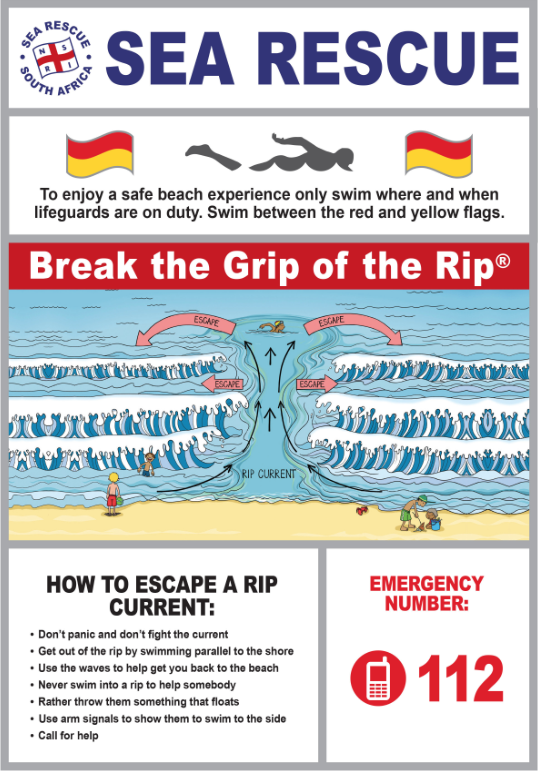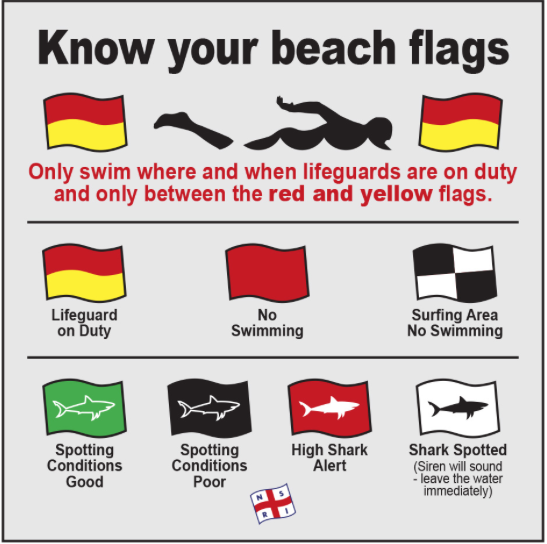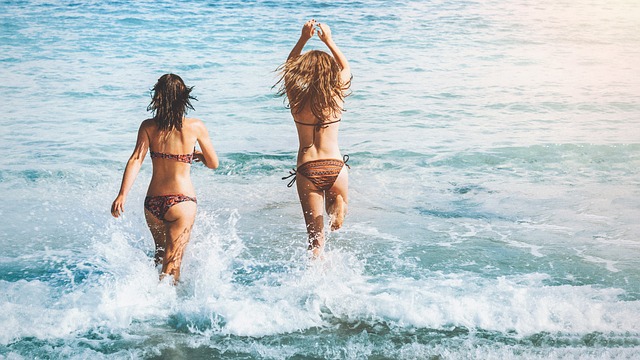Cape Town is everything you could want in an idyllic summer holiday destination; it has sun, sand and beautifully pristine beaches. This makes it popular with holidaying families who flock to the beaches in the warm months, but the National Sea Rescue Institute (NSRI) has advised those who want to frolic in the surf to be careful.
“Our rule number one for a safe experience at the beach is to choose a beach that has Lifeguards on duty and to swim between their flags,” the NSRI says. “That way you don’t need to worry about rip currents, or suddenly getting out of your depth. Putting an arm in the air and waving for help will get a rapid response from the Lifeguards on duty.”
Unfortunately, many people swim where there are no lifeguards on duty, either because none are posted at the beach they visit, or because the lifeguards have simply gone off duty for the day.
“In a typical scenario Sea Rescue gets an emergency call for a swimmer in difficulty and, when we get there, we find two or more people in danger of drowning. Tragically, sometimes we are not able to get there in time and someone drowns. Often the person who does not survive is sadly the kind person who went into the water to try and help a person who was in difficulty,” the sea rescue organisation says. “Because this happens so frequently, Sea Rescue launched our Pink Rescue Buoy project in November 2017. These bright Pink Rescue Buoys are hung on strategically placed signs and we hope that they will remind people to take care when entering [the] water – and not to swim if Lifeguards are not on duty [on] that stretch of the beach.”
When an incident occurs where someone in the water is in need of help, a Pink Rescue Buoy can be thrown to the person in trouble, helping them remain afloat while they wait for a rescue boat. Each Pink Buoy sign has clear instructions on how to use the device printed on it as well the emergency number of the closest Rescue Station.
“If anyone decides, against advice, to enter the water to try to rescue someone in trouble, first call sea rescue then the Pink Rescue Buoy provides flotation for that good Samaritan as well as for the casualty,” the NSRI says.

Have a plan in place to prevent panic in the event of an emergency:
– Make sure you have emergency numbers saved in your cell phone. You can find the NSRI emergency numbers here: www.nsri.org.za/emergency-numbers/ and you can dial 112 from any cell phone in any emergency in Cape Town for free
– Put the local Sea Rescue number in your phone too (or you can Google Sea Rescue to find the closest NSRI station emergency number)
– Check the wind, weather and tides
– Always tell someone where you are going and when you are due back, and make sure they know your route and intentions
– When climbing on, or fishing from, rocks, never turn your back on the sea. Rock anglers are strongly advised to wear a lifejacket and know when spring high tide is.
– If you are going paddling or out on a boat in the sea, before you launch, download and always use NSRI’s free SafeTrx app – http://www.nsri.org.za/safetrx.

Here are some safety tips to bear in mind this summer:
1. Only swim at beaches where and when lifeguards are on duty
Lifeguards are on duty at selected beaches between 10am and 6pm on weekends and during the week in the summer school holidays. Listen to their advice and talk to them about safety on the beach that you are visiting. They are the experts on that beach. If lifeguards are not on duty, do not swim.
2. Only swim between the lifeguard’s flags
Teach children that if they swim between the lifeguards flags the lifeguards will be watching them and can help if there is a problem. Lifeguards watch swimmers very carefully between the flags – just wave an arm if you need help.
3. Don’t Drink and Drown
Alcohol and water do not mix. Never drink alcohol and then go swimming.
4. Never swim alone. Always swim with a buddy
If you are with a buddy while swimming, there is someone who can call for help if you need it and can’t wave to the lifeguards or call for help yourself.
5. Adult supervision and barriers to water are vital
Adults who are supervising children in or near water must be able to swim. This is vital if they are at a water body that does not have lifeguards on duty. It is extremely dangerous to get into the water to rescue someone, so rather throw something that floats to the person in difficulty and call for help using the emergency numbers you have saved on your phone. Children should not be able to get through or over barriers to the water such as pool fences.
6. Know how to survive rip currents
If you swim between the lifeguard flags, the lifeguards will make sure that you are safe and well away from rip currents. If, for some reason, this is not possible, do not swim. Educate yourself about rip currents—there is plenty of educational material here: www.nsri.org.za/2017/01/beware-of-rip-currents/, which includes videos of what rip currents look like.
7. Don’t attempt to perform a rescue yourself
If you see someone in difficulty call a lifeguard at once or immediately dial for the nearest Sea Rescue station on your cell phone. You should put this number into your phone before you go to the beach – get the emergency numbers for NSRI here www.nsri.org.za/emergency-numbers/ or Google for the closest NSRI station emergency number. 112 is a good emergency number – for any emergency – to dial from your cell phone, and dialling the number is free. After calling for help, try to throw something that floats to the person in difficulty, like a ball, Pink Rescue Buoy, foam board, and so on.
8. Do not let children use floating objects, toys or tire tubes at the beach or on dams
You can very quickly get blown away from the shore and, as much fun as tubes and Styrofoam are, it is easy to fall off them. If a child cannot swim and falls off in deep water they will drown.
9. Do not be distracted by your cell phone or social media
While you are looking after children in or near water, you need to focus on them and nothing else. Adults who are supervising children should not use their cellphones or allow themselves to be otherwise distracted. It is not possible to concentrate on children in the water and be on your phone at the same time.
10. Visit a beach that has lifeguards on duty – there is a reason that we have repeated this!
Please remember that drowning is completely silent. Someone who is drowning will usually not shout for help. They will be vertical in the water (like they are trying to stand or climb stairs) and they will then silently slip under the water. Listening for children (or adults) in difficulty in the water is not good enough, they must be watched very carefully. Make sure that they are not getting in too deep or being moved by currents and swept away from the safe swimming area.
And, on the topic of watching people to make sure they are safe in or near water…
Be aware of storing water without safety covers and make sure that they are behind barriers to small children, especially ones under 4 years of age. A small child does not have the strength to lift themselves out of a bucket of water and if they fall into a bucket they will drown. At home, make sure that your pool has a child-safe pool cover or net and an approved fence that has a double-locking gate that cannot be climbed by small children.
Have a safety-conscious mindset around water—it may just help prevent an accident.
Picture: Pixabay






